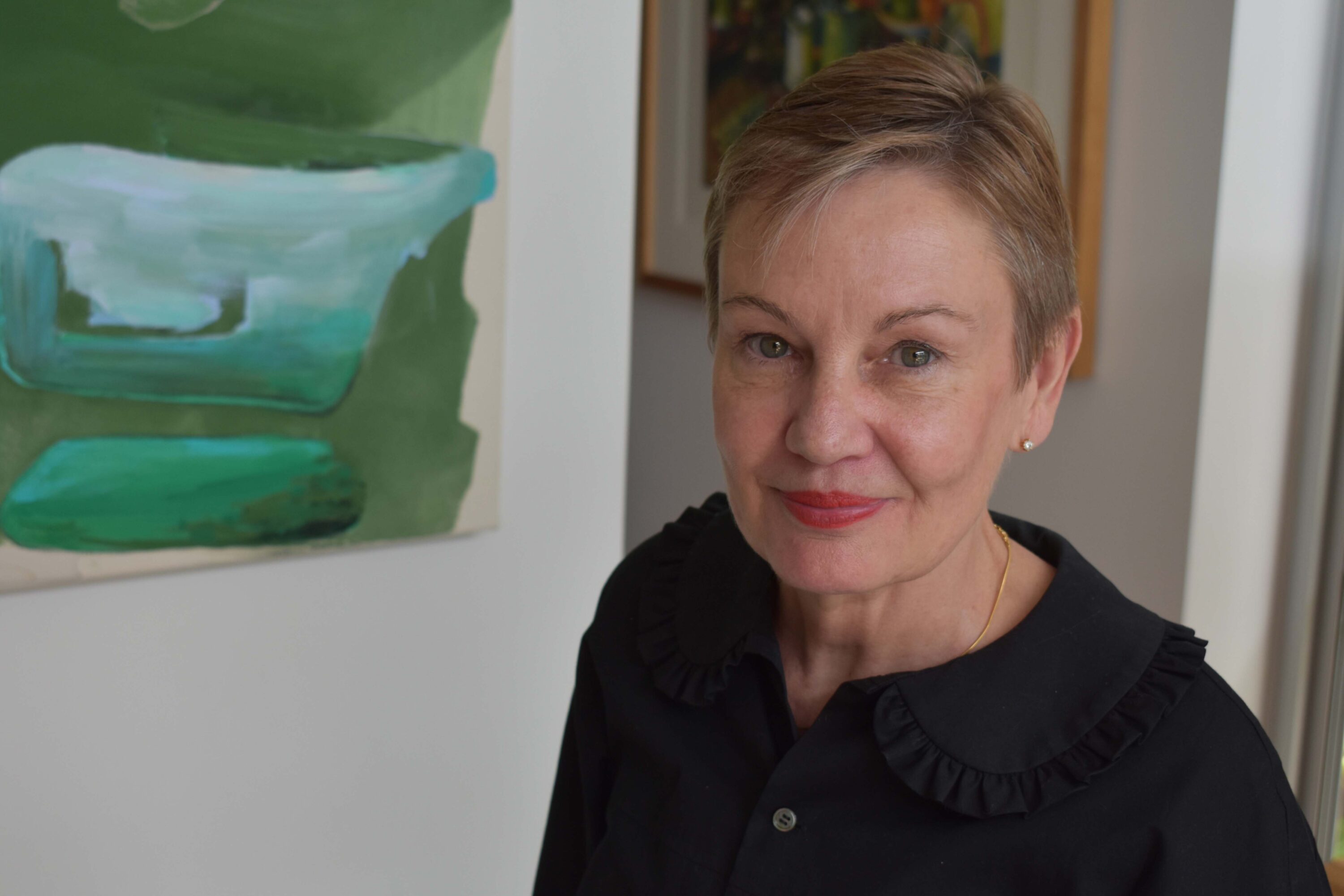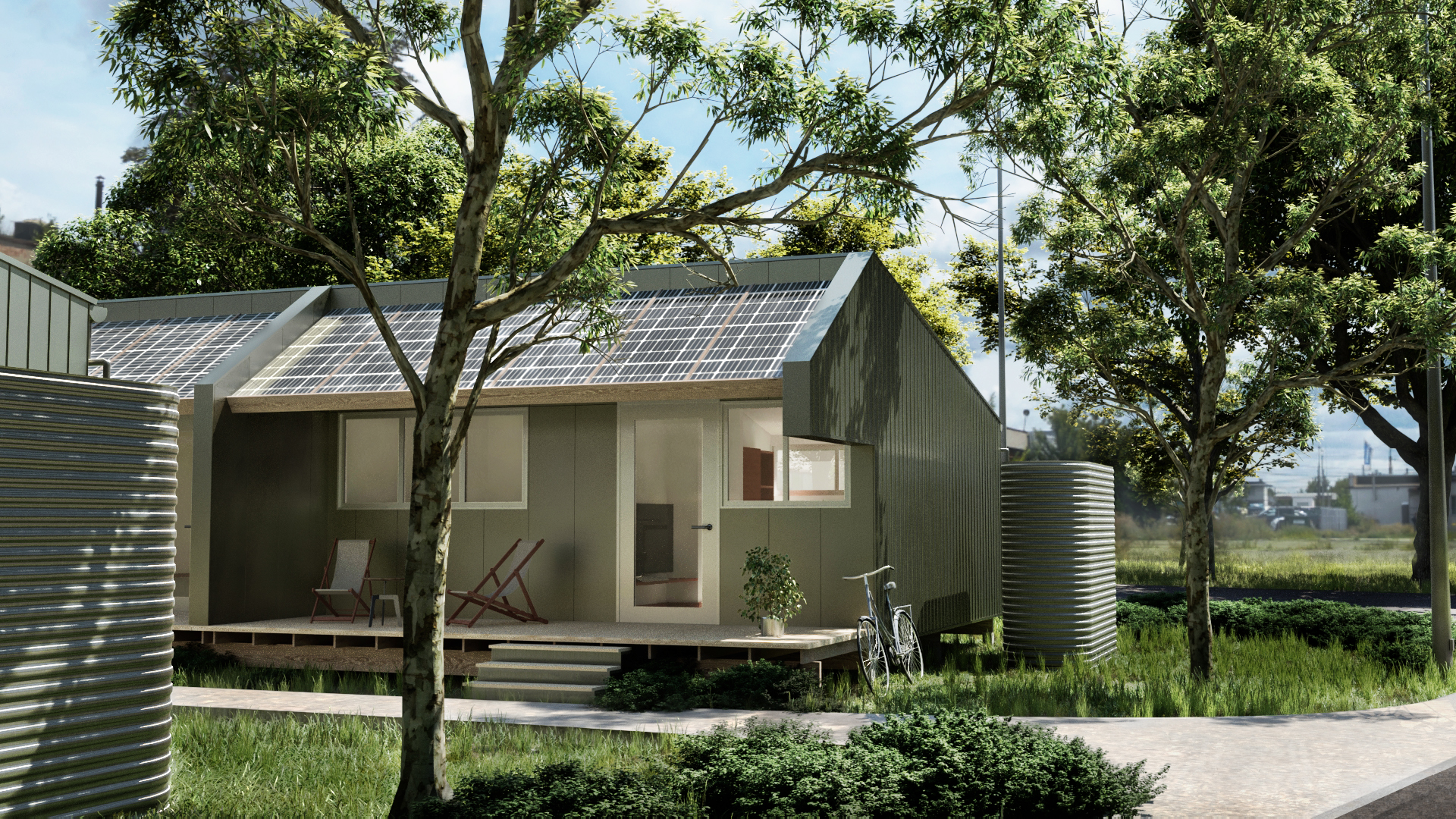Michelle Blakeley, Architect

Architecture is a second career for Michelle Blakeley. Previously, she was a writer and creative director in the advertising industry and director of a highly regarded advertising agency. Here, she talks about the advantages of age, the influence of her former career, and the founding of an organisation to build homes for people experiencing homelessness.
When was the practice established and what were its early ambitions? How has the practice evolved over time?
I was a mature age architecture student. Before I went back to study, I was a creative director and writer in the advertising industry in Perth and Sydney. My writing skills ensured my first architecture job, and they have come in very handy since.
I worked with two very esteemed practices before I took the step of starting my practice. I greatly admired their work, but my years in advertising made me question the business model.
I’ve always cringed at how practice staff are so often made redundant when a big project ends, and there isn’t a new project to take its place. It is such a roller coaster ride for a business and makes future planning very precarious. It’s also a savage psychological blow to architects and graduates who suddenly find themselves unwanted.
Five years ago, I set up my practice based on a common model used by advertising agencies. I use freelancers. When I need to, I bring in freelancers for drafting, 3D rendering and as a second brain. That way, I keep my business overheads very low and I don’t have the heavy responsibility of maintaining employed staff, avoiding the pain of severing staff relationships.
Another learning from advertising is client service. Advertising agencies have dedicated account service people who look after clients and act as a conduit between the creative and media departments. It is integral to the business model, and woe betides anyone who doesn’t deliver on time and on brief.
The brief underpins every action, and work is always tested against the brief.
A traffic manager controls and negotiates the flow of work through the office.
I was also conscious that I didn’t want to be burdened with a commitment to large overheads.
As well as avoiding staff overheads, I work from home. I live in a 1905 worker’s cottage on the edge of the Perth CBD. The front rooms of the old house are my office, the new build at the rear is my home. My dining table is my meeting room.
My biggest expenses are my software subscriptions and PI insurances.

I’ll be honest. Age does have advantages. It allows me to look beyond career building and business expansion to focus on projects that give me enjoyment.
I’m not paying off a home or car and putting children through school, so I give my all to a project without worrying about the return on my time.
It also gives me time to work on projects outside my fee-paying projects, such as teaching and pro-bono work.
The Covid lockdowns didn’t impact my business because I was already operating at home, and no adjustment was needed.
I look after my clients by keeping them up to date with the progress of the project, next steps, making them feel comfortable that their project is being actioned. In a profession where word of mouth is vital for introducing new business, attentive client service is essential.
I write very tight and concise return briefs before starting a project and keep returning to the brief throughout the project to test the validity of the design. It shouldn’t be a constraint but a launch pad for design opportunities.
What is the practice philosophy?
I’ve always been fascinated by applied arts. Form expressing function, whether it’s the design of a soup bowl or a building. The fascination for me is that beauty and joy can always be found in the mundane and utilitarian.
Co-incidental with starting my practice, I attended a lecture by Nigel Bertram at UWA. I still have a quote from him on my wall: “Do all the things you need to do, then interrogate to see what’s beyond possible.” It made me realise that was how I worked and continue to work. All the requirements, compliances, constraints, impacts are identified and committed to a hard or soft drawing. Then I start thinking about what’s possible. No matter how problematic they appear, each one of those considerations is an opportunity for a creative design response.

The Yalgoo Avenue project, winner of the 2018 AIA WA Sustainability Award. Photo: Perry Sandow.
Can you tell us about a key project or business initiative that provided a turning point in the life of the practice?
My Yalgoo Avenue house definitely clarified the direction of my work. It is a modest house on a small lot in an established suburb and dictated by a set of State Government design guidelines.
The client expressed an interest in SIPs and sustainable initiatives, so we explored various prefabricated systems.
We arrived at a builder who was a newcomer to Perth and had worked with prefabricated Passivhaus projects in Europe. He was appalled at the low standard of construction in WA and was passionate about educating the local market on prefabrication and Passivhaus. The project was my initiation into Passivhaus design and construction.
Since then, I work to Passivhaus principles, not aiming for certification but conscious of the basics of ventilation, insulation and airtightness as well as negating thermal bridging and reducing heat loss and gain through door and window framing and glazing. Orientation, shading, solar energy and low absorbency materials are common sense.
Add to that
- Response to context
- Efficiency of space
- Creating spaces of beauty and joy with elements of surprise, which become events in the experience of the building
- Recognising that natural light is a very cheap interior design element
- Letting architecture do its job without relying on add-ons, clip-ons, decorative elements for performance or activation of the design
- Honesty of materials
- Honesty of structure and allowing it to guide the external form
- Listening to the client.
That was a very cohesive melding of form and function, and it has defined my work subsequently, even when budget, lot size and planning policies are more generous.
What have been the biggest challenges and successes in recent years?
I’m not sure that I always achieve my work–lifestyle balance. Work seems to often take up far more of my week than I intended, particularly since setting up the “My Home” housing solution for homeless people.
What are some of the most important business management lessons you have learned?
Fortunately, my business management lessons came from my previous advertising career and had already been identified. Architecture practice and advertising practice are similar in many ways. Fundamental to both is the desire to produce outstanding creative and innovative work. That often leads to neglect of the business model.
People who are talented and skilled in their craft are often promoted to managerial positions but have little business management skills. It’s difficult. We start out being judged on our creative abilities, and it is hard to let go of that. Business acumen needs more respect in both professions.
How do you market your practice?
For someone who spent a first career in advertising and marketing, not very well!
Most of my business comes from word of mouth.
I have a page on Facebook, Instagram and Linkedin, but I don’t have a website.
Successful marketing needs to offer something of value to the target market. Education is of great value and costs nothing, so I have at different times posted a series of insights into design details, examples of what I consider good design (not just architectural) and examples of new and developing technology that is or could impact design and construction.
What are the ambitions for the practice?
To apply my architectural thinking and design skills to opportunities to improve the broader community. I am becoming more and more involved in low income affordable housing. It frustrates me that government focus is on affordable housing for Australians to purchase. The reality is that many people will never be in a position to buy or own a home. We need to accept that and start providing affordable rental housing, which gives the occupants security of tenure, thermal comfort as well as the enjoyment of well-designed spaces for low income workers and people at risk of homelessness.
I founded “My Home” as a PPP solution to build homes for people experiencing homelessness. The Public sector provides land at a peppercorn lease, the Private Sector funds construction through tax deductible donations, and the local Community Housing Providers takes on the management of the property and tenants. I read about the idea of building houses on vacant government land in Melbourne in an Architecture AU email. It seemed such a simple, collaborative solution to a very urgent community issue.
“My Home” has become an entity working with State government, Church and top corporates in WA and is about to be realised in several sites across Perth. We will continue to build homes into the future. And it’s all been done pro-bono.
I would love to see architects apply their skills to more diverse projects beyond built form. We have so much to offer our communities.

The “My Home” PPP housing solution.
How long have you been a member of the ACA?
Two years, approximately.
What do you see are the main benefits of membership?
Access to a variety of contracts, such as client and sub consultancy agreements, professional support. Keeping me up to date with the profession and what is impacting it.
What future initiatives would you like to see the ACA pursue?
Advocacy, particularly in planning reform, including build to rent and more flexible local planning policies driven by good design outcomes.
Profile photo: Royceton Hardey.
